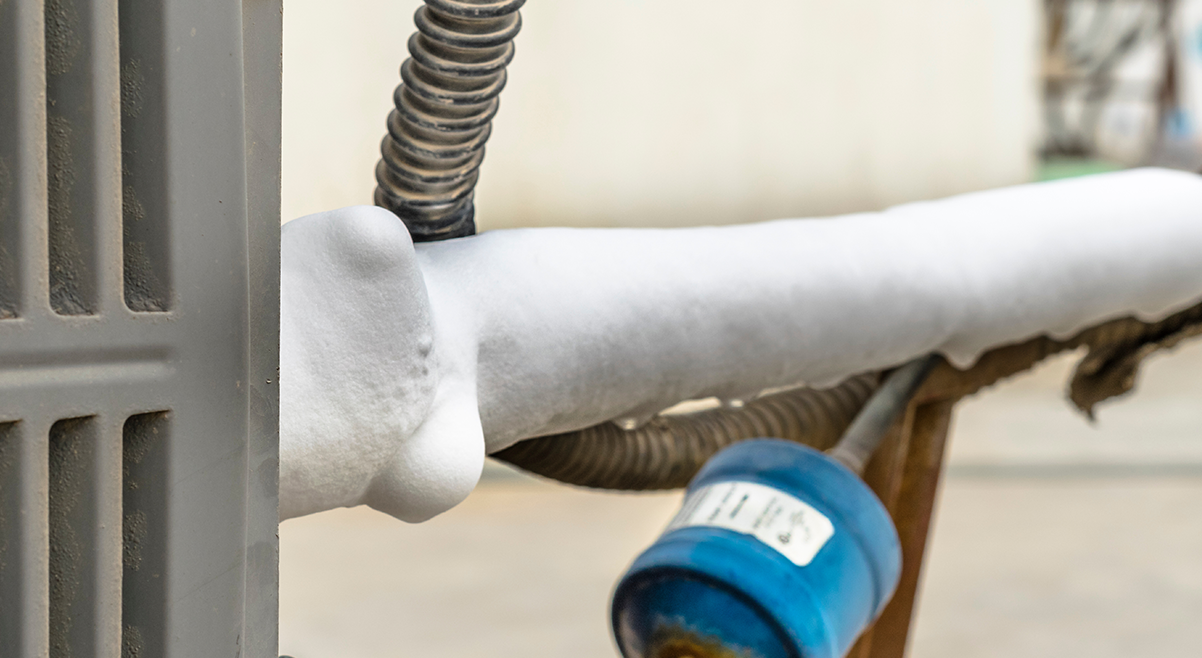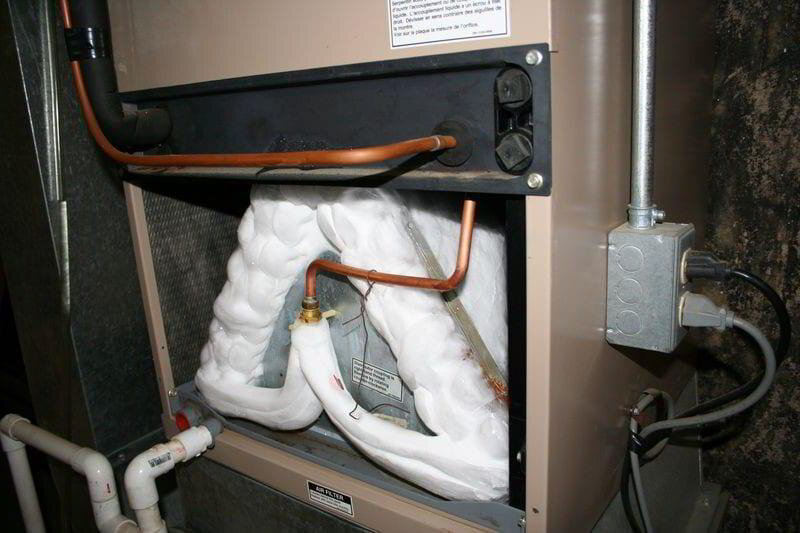Steps to Follow When Your AC Pipe Freezes: Key Tips
Steps to Follow When Your AC Pipe Freezes: Key Tips
Blog Article
Listed here down the page you will discover a bunch of professional details with regards to Why Is Ice On My Outside Air Conditione.

Introduction
Uncovering that your a/c pipe is iced up can be worrying, particularly during warm summer season when you rely upon your ac unit the most. Comprehending what to do in such a situation is vital to avoid additional damages to your cooling system and ensure your convenience inside your home.
Recognizing the Causes
Numerous elements can add to the cold of an air conditioner pipe. Understanding these causes can assist you deal with the concern properly.
Absence of Airflow
One typical root cause of an icy air conditioner pipe is inadequate air flow. When the airflow over the evaporator coil is limited, it can trigger the coil to drop below freezing temperature, leading to ice development on the pipe.
Reduced Refrigerant Levels
Inadequate refrigerant degrees in your air conditioning system can additionally lead to a frozen pipeline. Reduced refrigerant degrees can cause the pressure in the system to go down, resulting in the freezing of dampness on the evaporator coil.
Cold Weather Conditions
In colder environments, freezing temperature levels outside can contribute to the cold of AC pipes. If your air conditioner unit is not effectively insulated or if there are leaks in the ductwork, chilly air can infiltrate the system, triggering the pipeline to ice up.
Dirty Air Filters
Unclean or blocked air filters can restrict airflow in your air conditioning system, resulting in various concerns, consisting of a frozen pipe. It's essential to replace or cleanse your air filterings system regularly to make certain appropriate airflow and stop ice build-up.
Indications of a Frozen Air Conditioner Pipe
Recognizing the indications of a frozen AC pipeline is crucial for timely action.
Lowered Airflow
If you see a considerable decline in air flow from your vents, it might show a frozen pipe.
Ice Buildup on the Pipe
Noticeable ice build-up on the cooling agent line or the evaporator coil is a clear indication of a frozen air conditioning pipeline.
Strange Sounds from the Unit
Unusual noises, such as hissing or gurgling, coming from your a/c unit can signify that there's ice present on the pipeline.
Immediate Actions to Take
When confronted with a frozen a/c pipeline, it's essential to act rapidly to stop more damages to your cooling system.
Turning off the air conditioning
The very first step is to turn off your air conditioner to prevent the system from running and aggravating the concern.
Looking for Blockages
Examine the area around the indoor device for any obstructions that may be blocking airflow, such as furniture or drapes.
Defrosting the Pipe
You can use gentle methods like putting towels soaked in cozy water around the frozen pipe to assist thaw it slowly.
Safety nets
Taking safety nets can help stay clear of future occurrences of an icy AC pipeline.
Normal Maintenance Checks
Schedule routine maintenance get in touch with an expert HVAC technician to make certain that your a/c system is running successfully.
Altering Air Filters
On a regular basis change or cleanse your air filters to avoid airflow constraints and preserve optimum performance.
Insulating Exposed Pipes
If your AC pipes are subjected to chilly temperatures, take into consideration shielding them to stop cold throughout winter season.
Looking For Professional Help
If DIY methods fall short to solve the concern or if you're not sure regarding just how to continue, it's ideal to seek aid from a qualified HVAC service technician.
When DIY Methods Fail
If your attempts to thaw the pipe or address various other concerns are not successful, it's time to contact a professional.
Relevance of Hiring a Professional HVAC Technician
A licensed HVAC service technician has the knowledge and tools essential to diagnose and repair problems with your air conditioner system safely and successfully.
Conclusion
Managing a frozen a/c pipe can be a discouraging experience, yet recognizing just how to react can assist decrease damage and recover convenience to your home. By understanding the reasons, identifying the indicators, and taking prompt activity, you can effectively resolve the concern and avoid future events.
What to Do If Your AC Line Is Frozen
Make Sure All Supply and Return Air Vents Are Open
If you notice problems with airflow, the first thing you should do is check your supply and return vents. Supply vents distribute clean, conditioned air throughout your home. As this air becomes stale, it’s pulled into the return vent, where it’s reconditioned before being sent back out through the supply vent.
When these vents are closed, air won’t flow in the home. Before examining your AC, check the vents in every room and ensure they’re all open.
Check for a Dirty Air Filter
Another possible cause of limited airflow is a dirty air filter. Your air conditioner’s filters catch elements you don’t want to breathe in, such as dirt and dust. Over time, filters can become clogged, ultimately blocking air from flowing in and out. The lack of airflow can then cause the entire coil to freeze and will completely restrict any air from moving through it. The AC may need to be powered off for one to two days to allow the coil to thaw after replacing the filter to allow proper functioning of the unit. This debris can also accumulate on your AC’s evaporator coil, requiring a more serious repair. In general, air filters should be cleaned regularly (about every two weeks).
Assess Your Outdoor Unit
In addition to checking your AC, assessing the outdoor unit is a good idea. Also known as the condensing unit, it works with your interior unit to release heat outside. An issue with the outdoor unit can result in rising internal temperatures.
Overgrown Shrubs or Clogged Leaves
From leaves and twigs to shrubs and debris, there’s no shortage of outdoor elements that can accumulate around your condensing unit. When these elements get lodged inside the unit, they can block airflow. Fortunately, removing the blockage can solve the problem.
Sounds of a Broken Fan
Shrubs and leaves aren’t the only things that can impede your outdoor unit’s airflow. If the fan is broken, the unit won’t be able to properly get rid of heat — which means the internal temperature won’t go down. First, make sure the fan is spinning. If it is, check for the following sounds of a broken fan:
Buzzing Rattling Screeching Hissing Clicking Preventative Measures
Nobody wants to deal with a frozen AC line. In addition to causing problems with your air conditioner, they require professional repairs. On the bright side, there are preventative measures you can take to help ensure this issue doesn’t arise in the first place.
https://www.coopergreenteam.com/blog/what-to-do-if-ac-line-frozen

As an enthusiastic reader on What Causes AC Pipes To Freeze?, I imagined sharing that excerpt was worth the trouble. If you please take a moment to distribute this page if you liked it. Thanks a bunch for your time. Visit again soon.
Schedule An Appointment Report this page